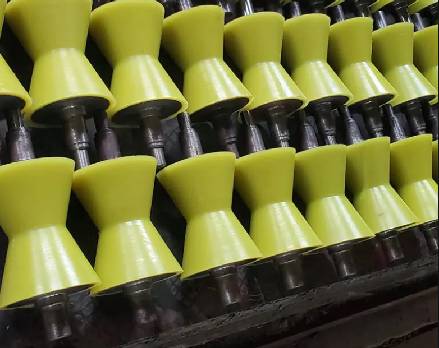 Afrikaans
Afrikaans  Albanian
Albanian  Amharic
Amharic  Arabic
Arabic  Armenian
Armenian  Azerbaijani
Azerbaijani  Basque
Basque  Belarusian
Belarusian  Bengali
Bengali  Bosnian
Bosnian  Bulgarian
Bulgarian  Catalan
Catalan  Cebuano
Cebuano  Corsican
Corsican  Croatian
Croatian  Czech
Czech  Danish
Danish  Dutch
Dutch  English
English  Esperanto
Esperanto  Estonian
Estonian  Finnish
Finnish  French
French  Frisian
Frisian  Galician
Galician  Georgian
Georgian  German
German  Greek
Greek  Gujarati
Gujarati  Haitian Creole
Haitian Creole  hausa
hausa  hawaiian
hawaiian  Hebrew
Hebrew  Hindi
Hindi  Miao
Miao  Hungarian
Hungarian  Icelandic
Icelandic  igbo
igbo  Indonesian
Indonesian  irish
irish  Italian
Italian  Japanese
Japanese  Javanese
Javanese  Kannada
Kannada  kazakh
kazakh  Khmer
Khmer  Rwandese
Rwandese  Korean
Korean  Kurdish
Kurdish  Kyrgyz
Kyrgyz  Lao
Lao  Latin
Latin  Latvian
Latvian  Lithuanian
Lithuanian  Luxembourgish
Luxembourgish  Macedonian
Macedonian  Malgashi
Malgashi  Malay
Malay  Malayalam
Malayalam  Maltese
Maltese  Maori
Maori  Marathi
Marathi  Mongolian
Mongolian  Myanmar
Myanmar  Nepali
Nepali  Norwegian
Norwegian  Norwegian
Norwegian  Occitan
Occitan  Pashto
Pashto  Persian
Persian  Polish
Polish  Portuguese
Portuguese  Punjabi
Punjabi  Romanian
Romanian  Russian
Russian  Samoan
Samoan  Scottish Gaelic
Scottish Gaelic  Serbian
Serbian  Sesotho
Sesotho  Shona
Shona  Sindhi
Sindhi  Sinhala
Sinhala  Slovak
Slovak  Slovenian
Slovenian  Somali
Somali  Spanish
Spanish  Sundanese
Sundanese  Swahili
Swahili  Swedish
Swedish  Tagalog
Tagalog  Tajik
Tajik  Tamil
Tamil  Tatar
Tatar  Telugu
Telugu  Thai
Thai  Turkish
Turkish  Turkmen
Turkmen  Ukrainian
Ukrainian  Urdu
Urdu  Uighur
Uighur  Uzbek
Uzbek  Vietnamese
Vietnamese  Welsh
Welsh  Bantu
Bantu  Yiddish
Yiddish  Yoruba
Yoruba  Zulu
Zulu Types of Belt Drive Pulleys and Their Applications in Mechanical Systems
Understanding Belt Drive Pulley Types
Belt drive systems are fundamental components in many mechanical assemblies across various industries. They play a crucial role in transferring power and motion from one component to another using a belt that links two or more pulleys. The choice of pulley type significantly influences the efficiency, performance, and longevity of the entire system. Understanding the different types of belt drive pulleys is essential for engineers, mechanics, and anyone involved in maintenance or design of mechanical systems. This article explores the primary types of belt drive pulleys, their characteristics, applications, and advantages.
1. Flat Pulleys
Flat pulleys are the most basic and are primarily used with flat belts. These pulleys feature a simple, flat surface that helps maintain the belt's position during operation. They are commonly used in situations where slow speeds are required, as they can slip easily if the load is excessive. Flat pulleys are ideal for applications like conveyor systems and basic machinery where high torque and speed are not necessary.
V-belt pulleys are designed to work specifically with V-belts, which have a trapezoidal cross-section. This design allows for a tighter grip and more efficient power transmission than flat belts. V-belt pulleys are widely used in automotive applications, machine tools, and HVAC systems. They come in various sizes and configurations, including single sheave, double sheave, and multi-groove variants, which allow them to handle various power requirements. The primary advantage of V-belt pulleys is their ability to transmit power without slippage, making them suitable for high-speed applications.
3. Timing Pulleys
Timing pulleys, also known as synchronous pulleys, are designed to work with timing belts that have teeth. These teeth fit into corresponding grooves in the pulley, ensuring positive engagement between the belt and pulley. Timing pulleys are integral in applications that require precise synchronisation between two components, such as in robotics, automotive timing systems, and CNC machinery. Their ability to maintain a fixed distance between connected components reduces the risk of belt slippage, making them essential in high-accuracy environments.
belt drive pulley types

4. Idler Pulleys
Idler pulleys are not directly driven by a power source but are used to guide, maintain tension, or redirect belts in a system. They are essential for ensuring the proper alignment of the belt and can significantly extend the lifespan of other pulleys by reducing wear and tear. Idler pulleys are commonly found in various belt-driven applications, including lawnmowers and industrial machinery, where maintaining belt tension and alignment is critical.
5. Cone Pulleys
Cone pulleys, or stepped pulleys, feature a conical shape that allows for variable speed by changing the belt position across different diameters. These pulleys enable flexibility in speed control without needing complex gear systems. Cone pulleys are particularly beneficial in applications requiring adjustable speed, such as lathes and other machine tools. They offer convenience and efficiency by allowing operators to adjust speeds easily while the system is in operation.
Conclusion
The selection of the appropriate type of belt drive pulley is vital for the efficiency and performance of a mechanical system. Understanding the characteristics and applications of flat pulleys, V-belt pulleys, timing pulleys, idler pulleys, and cone pulleys allows engineers and technicians to choose the right components for their specific needs. Each type of pulley serves a unique purpose and offers distinct advantages, from precise synchronisation in timing applications to high power transmission in V-belt setups.
Investing time and effort into understanding these pulley types can lead to significant improvements in machinery performance, reliability, and longevity. As industries continue to evolve, the importance of choosing the right components, including belt drive pulleys, cannot be overstated. By leveraging the strengths of each type, businesses can enhance their operational efficiency and maintain a competitive edge in their respective markets.
-
Revolutionizing Conveyor Reliability with Advanced Rubber Lagging PulleysNewsJul.22,2025
-
Powering Precision and Durability with Expert Manufacturers of Conveyor ComponentsNewsJul.22,2025
-
Optimizing Conveyor Systems with Advanced Conveyor AccessoriesNewsJul.22,2025
-
Maximize Conveyor Efficiency with Quality Conveyor Idler PulleysNewsJul.22,2025
-
Future-Proof Your Conveyor System with High-Performance Polyurethane RollerNewsJul.22,2025
-
Driving Efficiency Forward with Quality Idlers and RollersNewsJul.22,2025





























